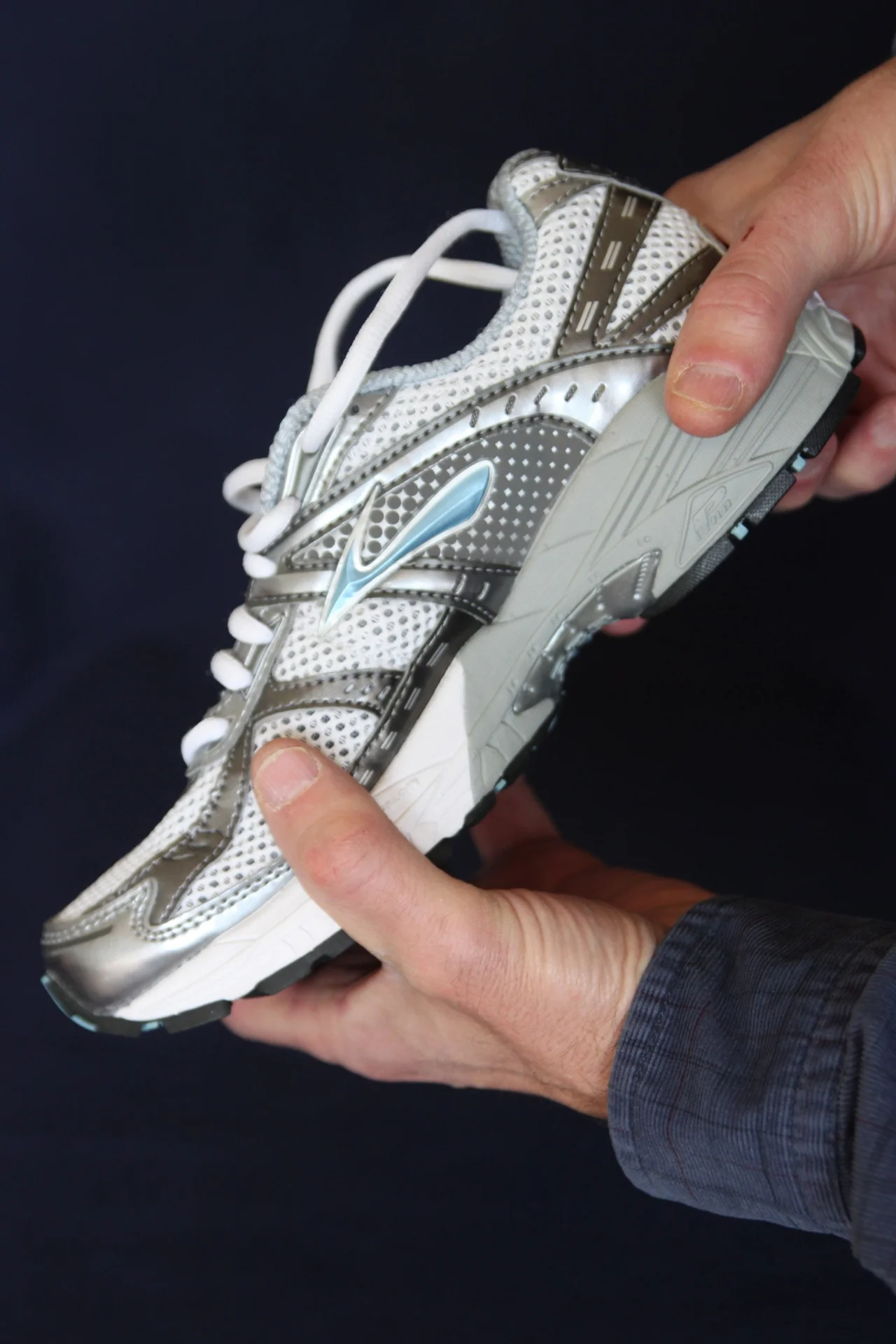Retail Focus: The Midsole
The Midsole is the area sandwiched between the out sole and the upper (or vamp, as we have learned).
The two jobs of the midsole are to provide some degree of shock absorption as well as torsional rigidity to a shoe.
Midsole material (usually EVA or similar material) is very important, as it will accommodate to the load imposed on it from the person and their body weight. It serves as the intermediary for load transfer between the ground and the person.
Softer density material in the heel of the shoe serves to soften the forces acting at heel strike (hopefully NOT when running) and “feels” good for impact and shock absorption. We know from studies we (and you) have read (and posts we have posted) that this is largely perception, as softer midsole materails generally INCREASE impact forces.
The stiffer or denser the midsole material, the more motion control it will provide. This is one of many “motion control features” put into shoes. Some shoes have two different density foams (called dual density midsoles (see pictures above)), to provide a more graduated resistance. The midsole is softer on its lateral aspect, to absorb force and decrease the velocity of pronation during heel strike and midstance (ie. it keeps you supinated a bit longer), with a firmer material medially that protects against overpronation as you come through mid stance and go through toe off.
Air is an excellent shock absorber, however it does not deform, it displaces. This creates an unstable surface for the foot, promoting ankle injuries. It is great for tires, but we feel does not have a place in shoes. Can you think of any shoes that have Air in the midsole? We can, we have all heard that brilliant marketing campaign. Foam and gel seem to be much better as they transduce the force and dissipate it.
What’s the bottom line? Materials determine the flex and to some degree, the shock absorbing characteristics of the shoe. More rigid midsoles provide more motion control, less rigid ones less. Not everyone can go into minimalist shoes, and not all need control. But we all need educated.
Want to know more? Take our soon to be released course “Proper Shoe Selection” or better yet, our entire shoe fit course, so you too can be a Shoe Jedi!
Shoe Jedi Masters….The Gait Guys
Make sure you visit our Youtube channel: The Gait Guys, or follow us on Facebook and Twitter


















